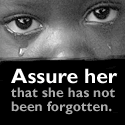One of the interesting things about historical fiction is that the novels transport you back to another place in time. Such is the case with 'A Trail of Ink: The Third Chronicle of Hugh de Singleton, Surgeon
 ’ by Mel Starr.
’ by Mel Starr.
Here is the synopsis of this novel :
:
Some valuable books have been stolen from Master John Wyclif, the well known scholar and Bible translator. He calls upon his friend and former pupil, Hugh de Singleton, to investigate. Hugh's investigation leads him to Oxford where he again encounters Kate, the only woman who has tempted him to leave bachelor life behind, but Kate has another serious suitor. As Hugh's pursuit of Kate becomes more successful, mysterious accidents begin to occur. Are these accidents tied to the missing books, or to his pursuit of Kate?
One of the stolen books turns up alongside the drowned body of a poor Oxford scholar. Another accident? Hugh certainly doesn’t think so, but it will take all of his surgeon s skills to prove.
“I have never seen Master John Wyclif so afflicted. He told me later that it was as onerous to plunder a bachelor scholar’s books as to steal another man’s wife. I had, at the time, no way to assess the accuracy of that opinion, for I had no wife and few books…”
So began another delightful and intriguing tale from the life of Hugh de Singleton, surgeon in the medieval village of Bampton, near Oxford, and bailiff of Bampton Castle. Hugh sets his cap at the delightful Kate, who proves equally resourceful in the search for the missing books. Some very determined adversaries are out to stop him, permanently if necessary – but are they motivated by greed, or more personal animosity? Then the corpse of a poor scholar, who had tried to sell one of the books, is found in the river; but he had not simply drowned….
Here is the biography of this author:
Mel Starr was born and grew up in Kalamazoo, Michigan. After graduating with a MA in history from Western Michigan University in 1970, he taught history in Michigan public schools for thirty-nine years, thirty-five of those in Portage, MI, where he retired in 2003 as chairman of the social studies department of Portage Northern High School. Mel and his wife, Susan, have two daughters and seven grandchildren. Mel has studied medieval surgery and medieval English. He lives in Michigan. He is also author of The Unquiet Bones and A Corpse at St. Andrew’s Chapel
and A Corpse at St. Andrew’s Chapel .
.
I found it charming how Hugh approached his courtship of Kate:
I left the stationer’s shop with both joy and apprehension. The joy you will understand, or would had you seen Kate and spent time in her presence. I was apprehensive because next day I must begin a thing for which I had no training and in which I had little experience. While at Balliol College I was too much absorbed in my set books to concern myself with the proper way to impress a lass, and none of those volumes dealt with the subject. Certainly the study of logic avoided the topic. Since then my duties as surgeon and bailiff allowed small opportunity to practice discourse with a maiden. And there are few females of my age and station in Bampton. (p. 14)
Being that this story is set in 14th century England, there are a lot of differences in culture and language between their lives and ours. Fortunately, Mr. Starr shares a Glossary with his readers at the beginning of the book. It came in handy with this particular paragraph:
We stood between the yard-spinner’s house and that of the cobbler as we discussed ladders and walls. While we spoke my gaze drifted over the town wall to the water meadow to the south and the willows lining the banks of the Cherwell. Two figures walked there; a woman dressed in a long cotehardie of blue, and a man wearing parti-colored chauces, a red cotehardie, and a cap ending in a long yellow liripipe. The couple were two hundred paces from me, and walking away, so I could not see their faces. I did not need to. (p. 45)
I loved Hugh’s perspective on life; here’s a great example – he is inspecting a patient:
It was as I expected. When I put my fingers to Aymer’s collarbone I felt the fractured end move under my touch. And the shoulder was swelling, turning red and purple beneath the skin. Aymer gasped as the broken bones grated against each other. I had used hemp and lettuce before, with good result. God provides much for men to ease their suffering in this world. But he had provided nothing which will end all suffering. So Aymer’s pain was less than might have been, but was real enough. Pain is God’s way of telling us not to do some things again. Surely Aymer, when he is next upon a roof, will take more care. (p. 57)
I also love how Hugh called on his Lord in times of trouble:
The gloom of my spirit matched the gloom of my cell. No friend knew of my plight, and those who put me in this place would not tell them. No, this was not true. There was a friend who knew of my affliction. I knelt in the rotten rushes covering the dirt floor of the cell and called upon the Lord Christ to free me from my unjust captors. Perhaps, I hoped, He had already noted my misfortune and set a plan in motion for my freedom. But it would do no harm to remind Him of my trouble in case others matters had captured His attention. An unwelcome thought came to mind. If the Lord Christ loved and served me only so much as I loved and served Him, where then might I be? (p. 70)
He also made an observation to that end later in the book:
I believe I am like most men. I call upon the Lord Christ when in need, but forget to speak to Him when my life is smooth and pleasant. I treat the Savior like a lawyer; I call upon Him only when I am in trouble. I vowed to amend my ways and prayed that some escape might appear before Arthur and I were made food for worms. I told him of my plight, and pointed out that, unless He intervened, I was likely to die soon. I concluded this prayer with that thought that, although he was surely occupied dealing with all the troubles men brought upon themselves and others, it would require of Him little effort to see us set free. (p. 177)
I found the ending to be very satisfying – and there is a fourth chronicle of Hugh de Singleton, surgeon, in the works; its title will be ‘Unhallowed Ground.’
To be honest, I didn’t ‘get into’ this book until about page 50. It is set in Oxford, England in 1365, and it was hard for me to gain sympathy for the characters at first. Gradually, Hugh de Singleton, his cohort Arthur and fiancée Kate drew my interest. It was definitely hard going at the beginning, though. It was interesting to learn that this story included actual locations and real people in history. Mr. Starr shared with his readers that some of the locations still exist, and some are simply piles of rubble.
As has happened in previous novels I have read that are set in a bygone era, this book made me grateful for the era and the country in which I dwell. It is good to be a citizen of the United State of America in 2011!
You can order this book here .
.
This book was published by Kregel Publications. I am proud to be participating in the blog tour through the LitFuse Publicity form with many other bloggers.





























.jpg)







No comments:
Post a Comment